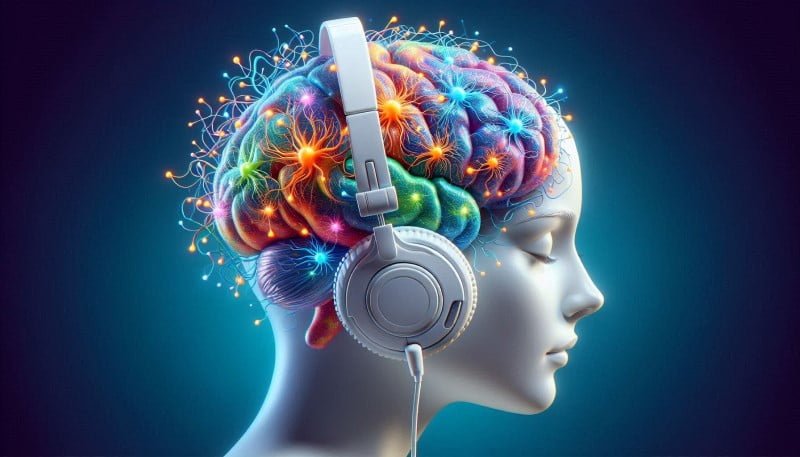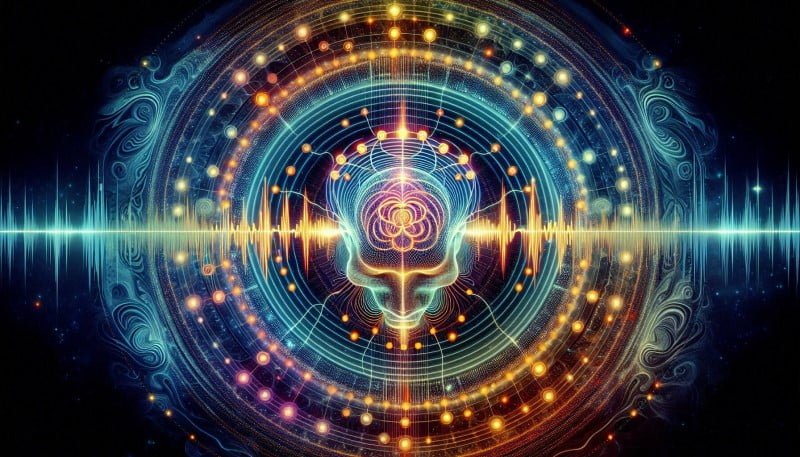
Ever notice how certain tunes can get your toes tapping, while others make you want to take a nap? Well, hold onto your headphones, folks, because it turns out that sound isn’t just tickling your eardrums – it’s giving your brain a full-body workout!
Welcome to the wild world of neuroscience, where researchers are uncovering some mind-blowing connections between sound, vibrations, and that gray matter between your ears. So, let’s crank up the volume and dive into this sonic adventure!
Your Brain: The Ultimate DJ
Picture your brain as the world’s most complex mixing board. But instead of just adjusting treble and bass, it’s tweaking your mood, focus, and even your health. Talk about a multi-tasker!
For instance, scientists have found that something called “pink noise” (think of it as white noise’s cooler, more laid-back cousin) can actually improve sleep and memory in older adults. It’s like a lullaby for your neurons! I tried it myself and, let me tell you, I’ve never felt so refreshed after a night of counting fewer sheep.
But wait, there’s more! Researchers have also discovered that certain sound frequencies can boost concentration. They use something called “binaural beats,” which sounds like a hip new band but is actually a technique where slightly different tones are played in each ear. Your brain blends these into one frequency, and suddenly you’re focused like a cat watching a laser pointer. I used it while writing this article, and I only got distracted by cat videos twice… okay, maybe three times.
Good Vibrations: Not Just for Beach Boys Fans
Now, let’s talk vibrations. No, not the mystical kind your crystal-loving aunt goes on about (though she might be onto something). We’re talking about physical vibrations that can shake up your brain – in a good way!
Scientists found that having people with Parkinson’s disease stand on vibrating platforms led to improvements in balance, walking, and even some thinking skills. It’s like giving your brain a gentle massage from the inside out. Who knew a little shake-up could be so beneficial? Maybe that’s why my dog looks so Zen after a car ride.
Ancient Wisdom Meets Modern Science
While all this sounds cutting-edge, humans have actually been exploring the brain-sound connection for millennia. Let’s take a quick trip in our time machine (seatbelts, please!) to check out two fascinating examples.
First stop: the 1970s. A groovy dude named Robert Monroe developed something called “hemi-sync.” The idea is to get both halves of your brain grooving to the same beat. It’s like being the choreographer for the world’s smallest dance troupe – your left and right brain hemispheres. Some folks swear it enhances everything from creativity to problem-solving. Maybe that explains disco?
Now, let’s zip way back to ancient India. Here, we find people chanting “AUM” (or “OM” if you’re into yoga). Turns out, this primordial sound might be more than just a spiritual thing. The frequency of AUM, about 432 Hz, seems to jive really well with our bodies’ natural rhythms. It’s like the universe’s oldest lullaby!
I tried chanting AUM myself, and while I didn’t achieve instant enlightenment, my cat did look at me with slightly less judgment than usual. Progress!

Striking a Chord with Your Neurons
So how does all this work? Think of your brain as a massive orchestra. Each section represents different brain regions. Now, imagine sound frequencies and vibrations as guest conductors, influencing how the orchestra plays.
Sometimes, they might get everyone playing in perfect harmony (hello, better sleep!). Other times, they might amp up one section (like when you’re trying to focus on that TPS report). It’s like tuning a radio – find the right frequency, and suddenly everything comes in crystal clear.
What’s Next on the Neuroscience Hit Parade?
While these findings are exciting, we’re still in the opening act of this scientific concert. There’s a lot more research needed before we start prescribing playlist therapies or vibration sessions.
But just imagine the possibilities! Could we one day have personalized “brain playlists” to boost our mood or help us ace that big presentation? Might “good vibrations” become a standard treatment for certain conditions? Could sound-based interventions help keep our minds sharp as we age?
As we wait for more research, one thing’s clear: the soundtrack of our lives might be more important than we ever imagined. So the next time you put on your favorite tune, feel the bass at a concert, or even chant an ancient mantra, remember – you’re not just listening to music, you’re giving your brain a workout!
A Word to the Wise (and the Rest of Us)
Now, before you go tossing your meds for a set of headphones, remember that this field is still young. While the results are promising, it’s always smart to approach new findings with a healthy dose of skepticism (and maybe a side of air guitar).
In the meantime, why not do a little experimenting yourself? Try some pink noise for better Zzz’s, binaural beats for laser focus, or even a bit of AUM chanting for relaxation. Just keep the volume at a reasonable level – your brain (and your neighbors) will thank you!
Who knows? You might just find your perfect cerebral symphony. And if not, well, at least you’ll have some great tunes to enjoy. Rock on, brainiacs!



